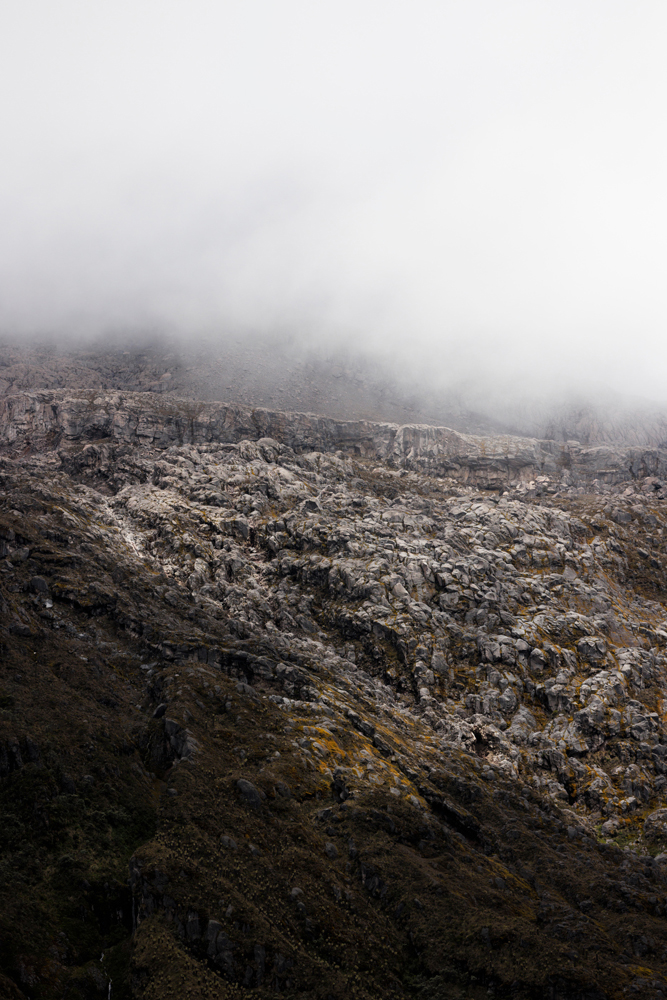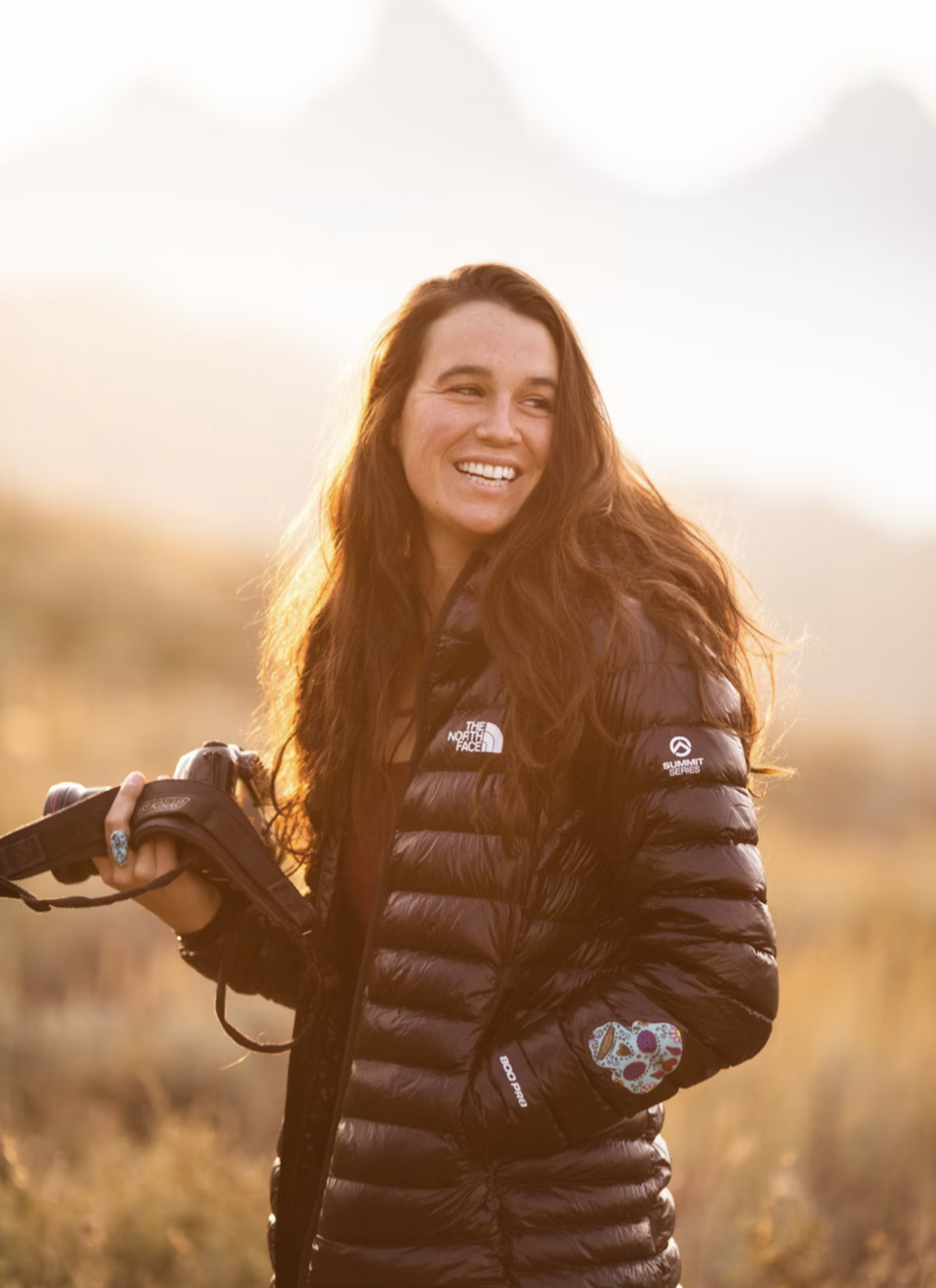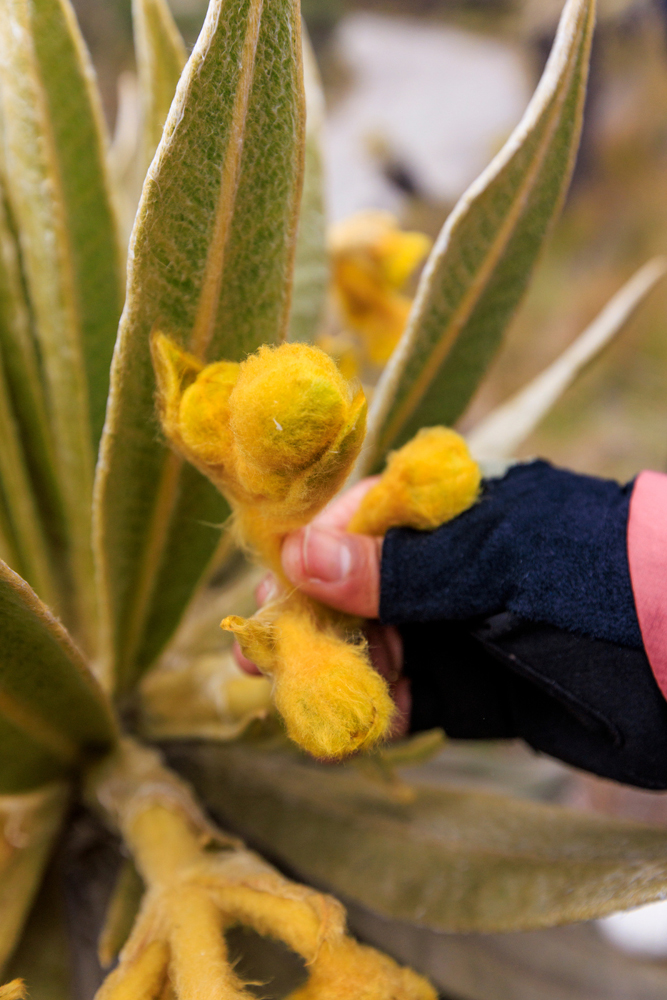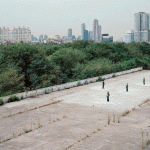CENTER Blue Earth Fiscal Sponsorship: Sofía Jaramillo – El Corazón de Los Andes

©Sofía Jaramillo, The páramo ecosystem is a high-altitude bog, found only in the Andean alpine of a few South American countries. The vegetation here serves as a giant sponge, storing rainwater and ice-melt in the soil, releasing it slowly and steadily throughout both wet and dry seasons, and making the páramo a vast reservoir that provides water for millions of Colombians—over 70 percent of the country’s population.
Congratulations to Sofía Jaramillo for being selected for Blue Earth Fiscal Sponsorship Award recognizing her project, El Corazon de Los Andes. CENTER is pleased to add the Blue Earth Fiscal Sponsorship to their services for photographers and filmmakers. CENTER sponsors documentary projects that educate the public about critical environmental and social issues and is primarily interested in work that is educational in nature. They considered proposals of any geographic scope involving the photographic and motion picture mediums. As a non-profit organization with 501(c)(3) status, CENTER is eligible to receive grants and tax-deductible contributions from private foundations, individuals, or other entities. This Fiscal Sponsorship does not include direct project funding or grants.
The Award includes a 1-Year Sponsorship, Professional Development Seminars, a Review Santa Fe Admission and Project Presentation, a Project Publication with Lenscratch and Inclusion in the CENTER Image Library & Archive.
The selection committee were Blue Earth Council Members, Staff & Board Members from CENTER & Blue Earth Alliance Teams.
Sofía Jaramillo is a Colombian-American filmmaker and National Geographic photographer based in Jackson, Wyoming.
Jaramillo’s work focuses on uplifting and telling the stories of BIPOC in outdoor spaces. Her mission is to tell the stories she wished she’d seen as a kid. Jaramillo got her start in photography working for media outlets like The New York Times, The Guardian and the Associated Press. She strongly believes in the power of storytelling and now works as a Director and Executive Producer in filmmaking. She helped shoot the first adventure ski film to feature women of color and adaptive athletes called The Approach, was a Story Producer and Cinematographer on OutWest film and an Executive Producer for the Soñadora film.
@sofia_jaramillo5
El Corazon de Los Andes
Above 12,500 feet in the Andes mountains lies the páramo, one of the most biodiverse ecosystems on Earth and sadly, one of the most threatened. Colombia is home to over half the world’s páramos, which act as a water catch net and are the primary freshwater source for millions including residents of Bogotá and Medellín. Climate change-induced warmer temperatures, deforestation, encroaching agriculture, mining, and wildfires all threaten this ecosystem, but a diverse group of communities in Colombia are taking action to protect it. As a Colombian American, I feel this overlooked story of protection and hope urgently needs to be told.
The páramos and their uniquely adapted plants not only absorb glacial melt but capture water from the clouds and slowly release it into streams and aquifers below. University of the Andes Bogota professor Santiago Madriñán and co-author of a recent study about the vulnerability of the páramo says, “There is no time or space to adapt to present trends of rising temperatures for many of the páramo plant species, including the Espeletias,” a key plant species otherwise known as frailejones or big friars, nicknamed for their semblance to tall men in brown robes. The páramos are not only home to a variety of plant life, but also dozens of endemic and threatened animals such as the Andean condor and the anteojos bear.
The Arhuaco indigenous community in Colombia believes the Andes are like the human body. The snow-capped peaks represent the head, the flowing glaciers and rivers are the veins and the páramo is the heart or corazón. The heart is the lifeblood of the human body. It gives strength and vitality to everything around it, just like the páramo it pumps a vital resource throughout. Without it, the entire ecosystem and everything connected to it does not function.
My Colombian American identity provides an opportunity to understand and share both cultures. As someone with a dual identity, I feel I can be a bridge between two cultures and that I have a duty to be an ambassador of both.
As a Colombian American who works between Colombia and the US, whose immediate family lives in Colombia, who has spent significant time in Colombia, someone who knows the páramos ecological and cultural significance firsthand, and whose family and friends depend on the páramos for their livelihood I believe I am the right photographer to document this story.
I will use my skills as a documentary photographer and the experience I have gained during my years in photojournalism and adventure photography to create a coherent collection of images that capture the Colombian páramo in the present moment. The final product will be a long-form visual narrative that shares the importance of the páramo as a crucial water source, the importance of its flora and fauna, and the diverse groups working to protect it.
While this critical watershed provides freshwater to over 10 million people living in Bogotá and Medellín, protecting the Colombian páramo has an even broader impact. Páramos across the Andes provide drinking water to an estimated 40 million people and are home to 5,000 species—3,000 of which live nowhere else on Earth.
The páramos of Latin America rarely garner large amounts of coverage, especially internationally, compared to connected ecosystems like glaciers. Publishing this solutions-oriented story will have an immense impact by filling a void in international coverage, and inspiring people beyond Colombia to care about the páramos.
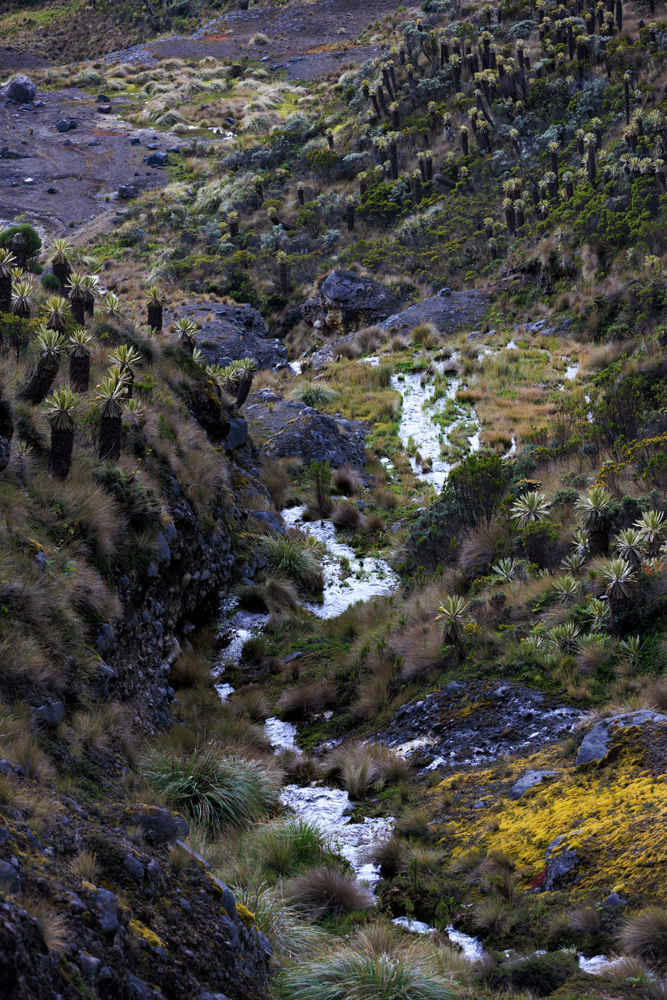
©Sofia Jaramillo, The páramo ecosystem is a high-altitude bog, found only in the Andean alpine of a few South American countries. The vegetation here serves as a giant sponge, storing rainwater and ice-melt in the soil, releasing it slowly and steadily throughout both wet and dry seasons, and making the páramo a vast reservoir that provides water for millions of Colombians—over 70 percent of the country’s population.

©Sofia Jaramillo, The páramo ecosystem is a high-altitude bog, found only in the Andean alpine of a few South American countries. The vegetation here serves as a giant sponge, storing rainwater and ice-melt in the soil, releasing it slowly and steadily throughout both wet and dry seasons, and making the páramo a vast reservoir that provides water for millions of Colombians—over 70 percent of the country’s population.
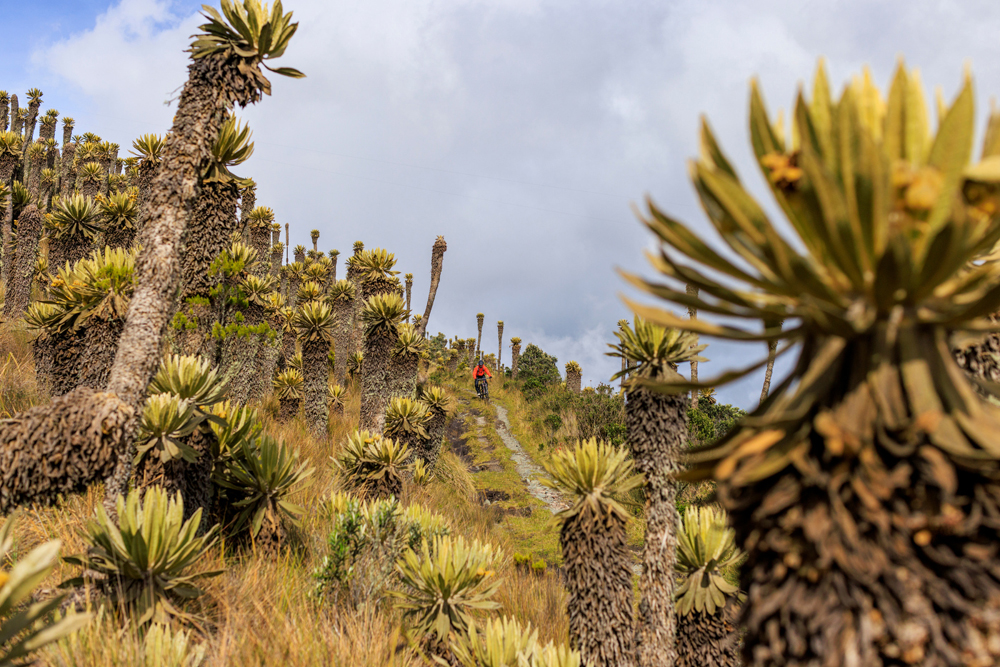
©Sofia Jaramillo, Alex Yoder rides on a designated trail outside of Los Nevados National Park. Despite their spikey appearance, frailejones actually belong to the same family as sunflowers and daisies, and many sport yellow, red or white flowers for much of the summer.
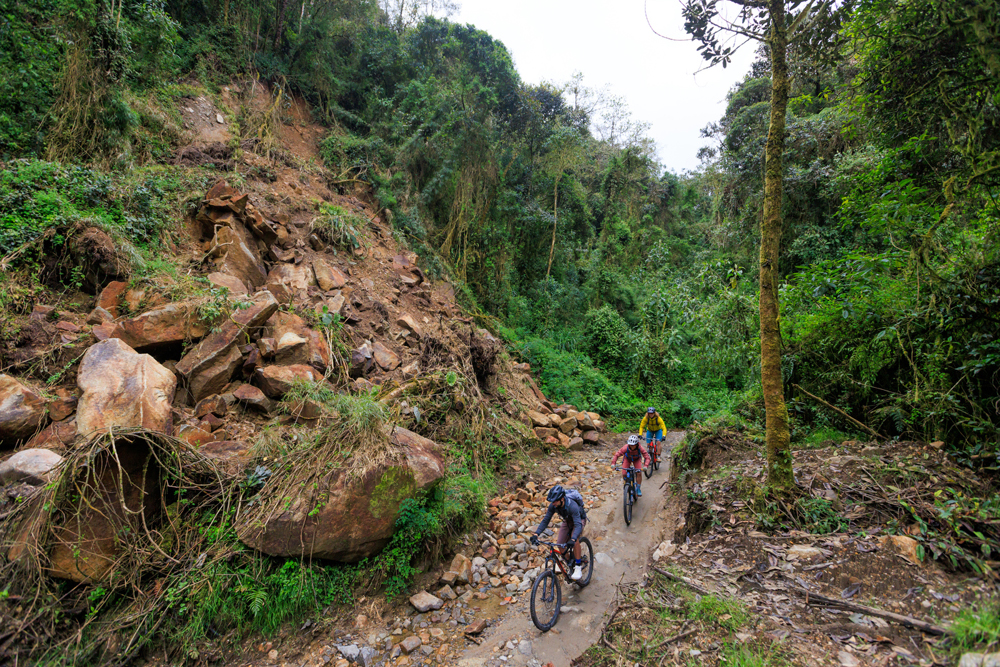
©Sofia Jaramillo, Alex, Emilé and Lucas (left to right) pass the remains of a mudslide on a road outside of Manizales. Such slides are becoming increasingly common on the region’s dirt roads, as climate change intensifies extreme rainstorms that oversaturate the steep hillsides.
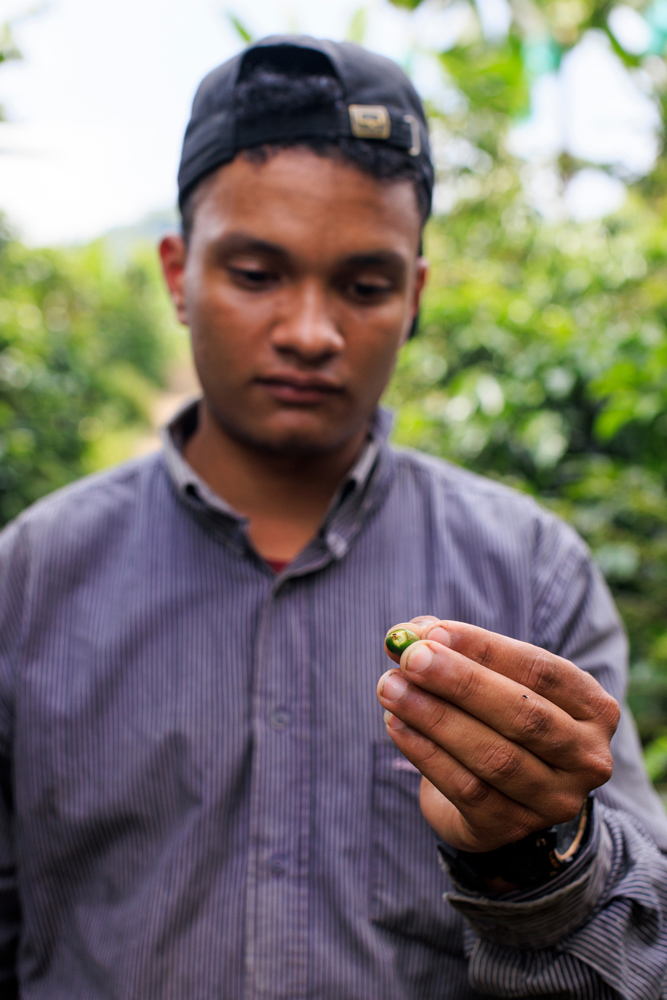
©Sofia Jaramillo, Jeferson Gonzales spends his days waging war against a bug the size of a pinhead: the coffee berry borer, an invasive species that first appeared in Colombia in the late 1980s. The 22-year-old Venezuelan works his way through the Hacienda Venecia coffee farm’s nearly 400 acres, one plant at a time, using a knife to cut open individual cherries to check if they’re infected. “See, here is one,” he says, holding up a cherry with a rotted-out bean, and picks out a little black speck. This information helps Hacienda Venecia decide where and when to fumigate with pesticides, the method most commonly used by conventional farmers to control the coffee berry borer.
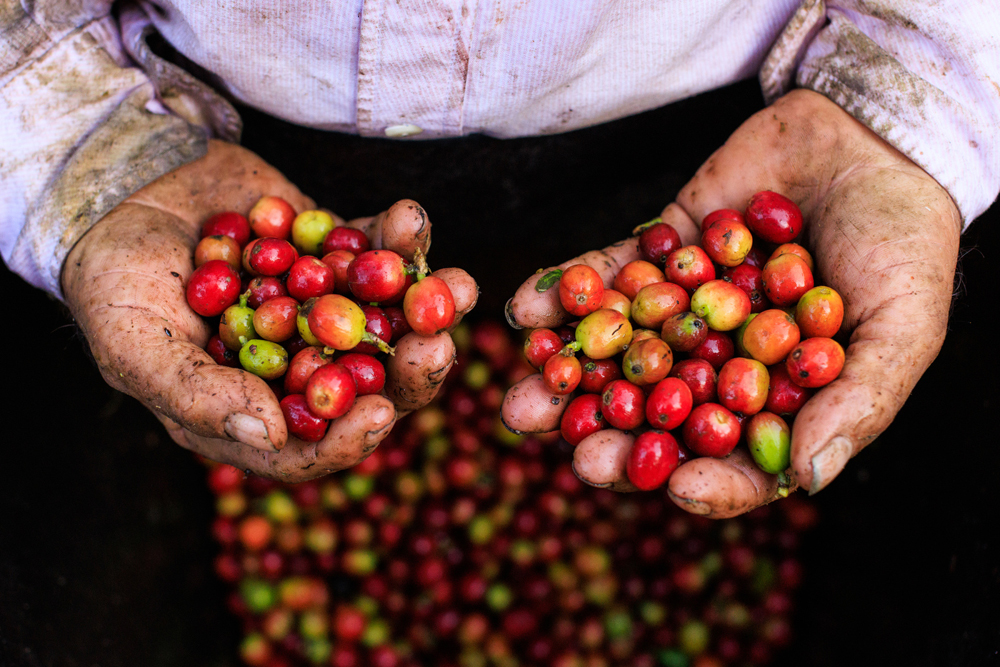
©Sofia Jaramillo, Historically, coffee farmers in Colombia harvest their crop twice a year, but erratic rain patterns have forced some to harvest through the entire year, picking berries as they ripen—meaning a single plant may have a mix of both green and red berries.

©Sofia Jaramillo, Pedro Nicolás Valencia Garcia harvests a spectrum of color at Finca Portugal, a coffee farm outside of Manizales.
About CENTER
Founded in Santa Fe, New Mexico, in 1994, the 501(c)(3) not-for-profit organization CENTER supports socially and environmentally engaged lens-based projects through education, public platforms, funding, and partnerships.
Image-making holds a unique power to confront audiences with uncomfortable truths, advance cultural understandings, and promote social justice. Through our advancement of artists and their work, CENTER serves to deepen public understanding of lens-based media’s complex history and ongoing cultural significance. By establishing trans-disciplinary partnerships between artists and justice-driven communities, historians, cultural critics, students, and the art world, they honor our unique role in advancing projects that respect all people, open minds, and engage our shared humanity.
Characterized by a community of gifted and committed photographers, CENTER has proven for the last 29 years that it can help photographers and lens-based artists grow into their full potential. CENTER programs foster insights and actualizations that ripple and impact all involved by providing platforms where the creative impulse can be engaged and challenged.
ANNUAL PROGRAMS | Includes the Project Launch Grant, Project Development Grant, Me&Eve Grant, the three CENTER Awards: Personal, Social and Environmental, the Excellence in Multimedia Storytelling Award, Santa Fe Fellowship, Callanan Excellence in Teaching Award, and the Review Santa Fe Photo Symposium. Public exhibitions, educational presentations, and expositions of the work are held in conjunction with the awards, grants, and Review Santa Fe. These programs are open for submission to international and national photographers and lens-based artists during our annual Calls for Entry.
Follow CENTER on Instagram: @centersantafe
Posts on Lenscratch may not be reproduced without the permission of the Lenscratch staff and the photographer.
Recommended
-
Arnold Newman Prize: C. Rose Smith: Scenes of Self: Redressing PatriarchyNovember 24th, 2025
-
Celebrating 20 Years of Critical Mass: Cathy Cone (2023) and Takeisha Jefferson (2024)October 1st, 2025
-
Celebrating 20 Years of Critical Mass: George Nobechi (2021) and Ingrid Weyland (2022)September 30th, 2025
-
Celebrating 20 Years of Critical Mass: Amy Friend (2019) and Andrew Feiler (2020)September 29th, 2025
-
Celebrating 20 Years of Critical Mass: Jennifer McClure (2017) and JP Terlizzi (2018)September 28th, 2025


